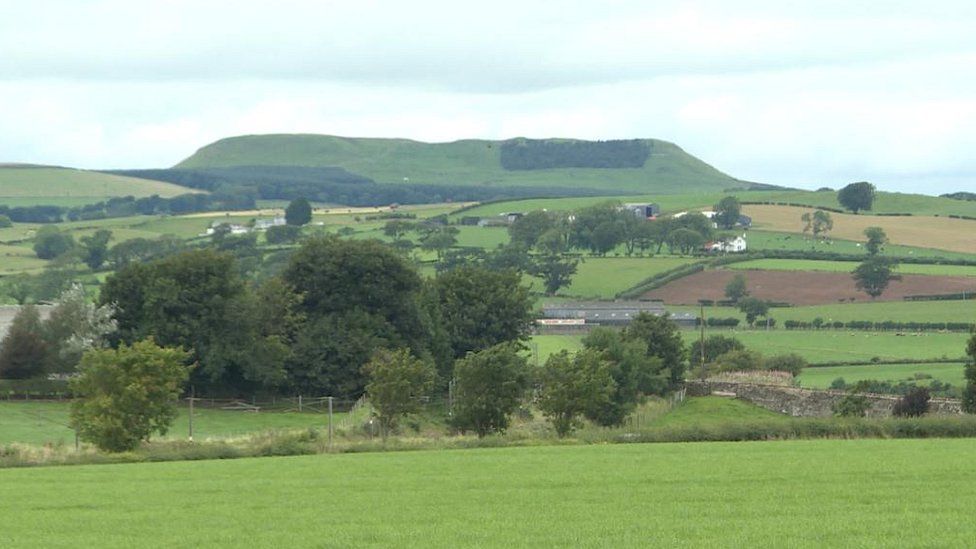Burnswark's bloody Roman history becomes clearer
- Published

There's growing evidence that a landmark flat-topped hill in Dumfriesshire was the site of the first major battle of the Roman invasion of Scotland.
Archaeologists have been trying for 300 years to assess the role of Burnswark in the Roman occupation.
New excavations suggest the truth is more bloody than had been thought up to now.
Burnswark rises a thousand feet from the Solway plain and is clearly visible from miles around.
On its summit the remains of a native hill fort. On the north and south slopes, two huge Roman camps capable of housing 6,000 soldiers or more. But what went on here?
One theory is that the Romans used the abandoned fort to train their men in weaponry - an early firing range. Another suggests that the fort was still occupied by local tribespeople and came under prolonged siege to starve them out.
But new evidence points to a third - much bloodier - version of events.
Lead archaeologist Andrew Nicholson believes it was the first assault in the Roman invasion of Scotland around 140 AD.
"What this probably is, is the start of the Antonine push from Hadrian's Wall, conquering all of southern Scotland," he said.
"After the emperor Hadrian has died the new emperor Antoninus Pius needs a victory as the incoming emperor.
"Southern Scotland is beyond the wall, beyond the borders, it is barbarian and Burnswark and the rest of Annandale and everywhere south of the Forth-Clyde line is its intended target."
A two-week dig last summer is being following by another now.
Using metal detectors it has been found that massive amounts of lead-shot were fired at the fort - and not in a way indicating target practice.
More evidence is the known presence of a general Lollius Urbicus brought here from the Middle East to do the emperor's dirty work.
John Reid of the Roman Heritage group the Trimontium Trust says Urbicus had "previous".
"He made his name in the Jewish war which had taken place in Israel in the previous four years where they had literally gone through the whole of Judea taking hill forts one after the other," he said.
"He was given the job of taking Scotland, we know that from Roman literary sources.
"So he was here and this is where they blood their troops."
It seems very clear they meant business. Many of the lead bullets found at Burnswark have identical 4mm holes in them which, initially, was a mystery.
John Reid went to Germany to consult an expert in sling shot ballistics, Joerg Sprave.
And the effect of the hole became obvious when replicas were made and fired.
"You'd hear this screeching noise that you've never heard before or experienced before in your life," explained Mr Nicholson.
"What sort of unearthly spirits are these dreadful Romans conjuring up to assail you with amongst all their missiles?
"I hear this keening sound through the air and the chap with the spear next to me drops dead and I wonder what on earth is doing it. I'd be utterly terrified."
So, the personnel involved and the quantity and type of slingshot used suggests complete overkill against a weaker, poorly-armed enemy.
"The Romans were well recognised for what is called exemplary violence," said Mr Reid.
"These people literally did suffer the slings and arrows of outrageous fortune.
"This literally is a site where people suffered an attrition to the very end and I would suspect that probably nobody survived this and the Roman army moved on into the rest of Scotland."
More work will be required to prove this new theory definitively and that's planned in the years ahead.
But those involved here are confident that - in police slang - they've got the Romans bang to rights.